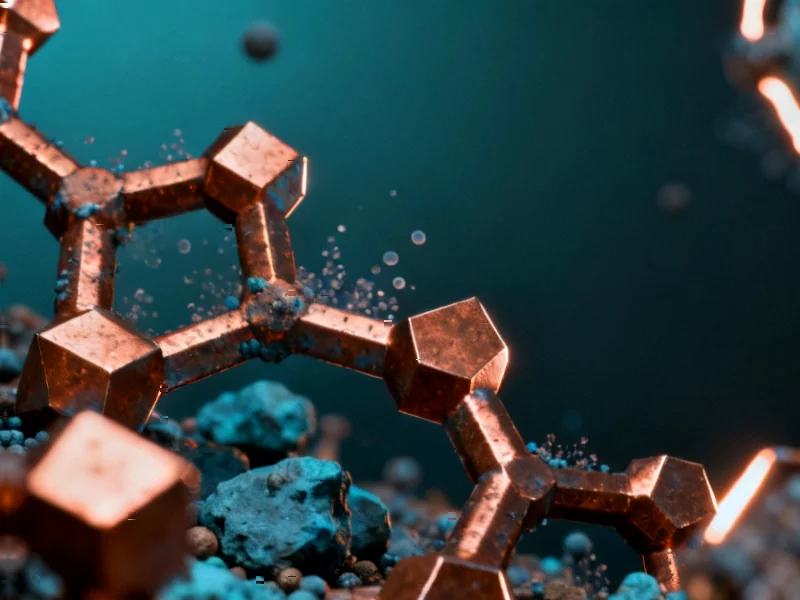TITLE: Microbes Found to “Breathe” Iron, Combat Ocean Dead Zones
META_DESCRIPTION: Scientists discover MISO bacteria that detoxify sulfide by breathing iron minerals, potentially limiting the spread of oxygen-depleted dead zones in aquatic environments.
EXCERPT: Researchers have identified a novel microbial metabolism where bacteria “breathe” iron minerals to eliminate toxic sulfide. This biological process, occurring in marine sediments and wetlands, may help prevent the expansion of oxygen-depleted dead zones in oceans and lakes while playing a significant role in global element cycles.
A New Player in Planetary Detoxification
Scientists have uncovered what appears to be a previously unknown form of microbial metabolism that could play a crucial role in regulating Earth’s environmental health. According to research findings published in Nature, microorganisms discovered in marine sediments and wetlands are capable of “breathing” iron minerals to eliminate toxic sulfide from their surroundings.
Table of Contents
The international research team, led by microbiologists Marc Mussmann and Alexander Loy at the University of Vienna, identified these newly discovered microorganisms as MISO bacteria. Their work reveals that the reaction between hydrogen sulfide and solid iron minerals isn’t purely chemical as previously thought—it’s also biological. This natural detoxification mechanism may help limit the spread of oxygen-depleted “dead zones” that threaten marine ecosystems worldwide.
Rethinking Global Element Cycles
Earth’s biogeochemical cycles have long been understood as complex systems where elements like carbon, nitrogen, sulfur, and iron move between the atmosphere, oceans, soil, and living organisms. These cycles depend heavily on redox reactions—chemical processes involving reduction and oxidation—that regulate everything from greenhouse gas levels to global temperature balance.
What makes this discovery particularly significant, according to the research team, is how it reshapes our understanding of microbial involvement in these processes. Microbes in low-oxygen environments like seafloors and wetlands have evolved to use compounds like sulfur and iron for energy production in ways analogous to how humans use oxygen. The connection between sulfur and iron cycles affects nutrient flow and the production or breakdown of greenhouse gases, making this discovery crucial for predicting how ecosystems respond to human activities and climate change.
As microbiologists have long suspected, the interactions between different elemental cycles are far more complex than previously documented. This new research provides concrete evidence of those connections.
From Chemical to Biological Understanding
In oxygen-free habitats such as marine sediments and wetlands, specialized microbes produce hydrogen sulfide—the toxic gas responsible for that distinctive rotten egg odor. Until now, scientists believed the interaction between sulfide and iron(III) oxide minerals was entirely abiotic, driven solely by chemical reactions that produce compounds like elemental sulfur and iron monosulfide.
“We show that this environmentally important redox reaction is not solely chemical,” Alexander Loy explained in the research findings. “Microorganisms can also harness it for growth.”
The newly discovered microbial energy metabolism, termed MISO, couples the reduction of iron(III) oxide with the oxidation of sulfide. Unlike the purely chemical reaction, MISO directly produces sulfate, effectively bypassing intermediate steps in the sulfur cycle. This biological shortcut appears to be both more efficient and environmentally beneficial.
“MISO bacteria remove toxic sulfide and may help prevent the expansion of so-called ‘dead zones’ in aquatic environments, while fixing carbon dioxide for growth—similar to plants,” added Marc Mussmann, senior scientist at the Centre for Microbiology and Environmental Systems Science.
Faster Than Chemistry Itself
Perhaps the most surprising aspect of this discovery emerged from laboratory growth experiments. The researchers demonstrated that the enzymatically catalyzed reaction performed by MISO bacteria is actually faster than the equivalent chemical reaction. This suggests microbes are likely the primary drivers of this process in natural environments.
Lead author Song-Can Chen noted that diverse bacteria and archaea possess the genetic capacity for MISO metabolism, and they’re found in a wide range of natural and human-made environments. The implications are substantial—in marine sediments alone, MISO could account for up to 7% of global sulfide oxidation to sulfate, driven by the substantial flux of reactive iron from rivers and melting glaciers into the oceans.
The research, supported by the Austrian Science Fund as part of the ‘Microbiomes Drive Planetary Health’ Cluster of Excellence, reveals a previously unknown biological mechanism linking sulfur, iron, and carbon cycling in oxygen-free environments. For scientists studying wetland ecosystems and marine environments, this discovery provides crucial insights into how natural systems manage toxicity and maintain balance.
Broader Implications for Planetary Health
This discovery comes at a critical time for environmental science. As climate change accelerates and human activities continue to impact marine ecosystems, understanding natural detoxification mechanisms becomes increasingly important. The ability of MISO bacteria to limit sulfide accumulation could prove vital in preventing the expansion of dead zones—areas where oxygen levels drop too low to support most marine life.
What’s particularly compelling about this research is how it demonstrates the metabolic ingenuity of microorganisms and highlights their indispensable role in shaping Earth’s global element cycles. As Alexander Loy concluded in the research publication, these findings remind us that we’re still uncovering fundamental biological processes that have been operating beneath our notice—processes that ultimately help maintain the planet’s health.
The study, “Microbial iron oxide respiration coupled to sulfide oxidation” by Song-Can Chen et al., represents not just a single discovery but potentially opens an entirely new avenue of research into how microbial communities contribute to environmental stability and recovery.



